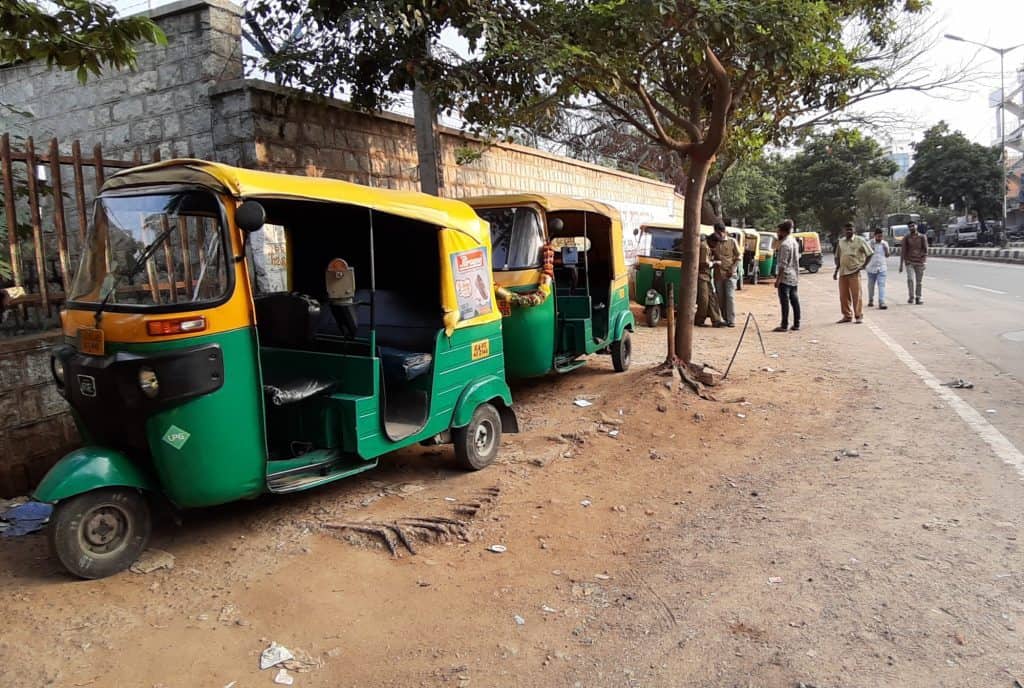Krishnamurthy, an auto driver in Bengaluru for the past 22 years, finds passengers through ride-hailing apps like Ola and Uber only when heading back home at night. To find passengers going in the same direction.
At other times, he is able to find customers around the malls where he usually works without using the apps. His main grouse is over the commission that the apps charge, but says customers tend to trust apps more even if their charges are high.
For instance, on the app, he shows that the charge for a particular 1-km trip was Rs 90. “If a customer comes to me directly, I’d have asked for Rs 45,” says Krishnamurthy. “But they would then question why the amount is so high. But if the app says Rs 90 for just one km, they pay because they believe the app cannot be wrong.”
Krishnamurthy’s is not a lone voice against the ride-hailing apps. Generally during mornings, most auto drivers tend to use the apps. But many use it only part-time. They say they are able to find customers without apps, but that the apps are beneficial at certain times.
Their main complaints are the commission the apps charge, the lack of payment for the additional travel to pick up a customer, and what they perceive as customers’ increased distrust towards drivers.
Raju, who has been an auto driver for over 20 years and has a few regular customers, also uses apps only part-time. “I recently started using Ola part-time as I thought it would improve my business,” says Raju. “But the number of customers are similar with or without apps. I prefer finding customers directly since the app charges commission.”
Read more: The economics of being a cab driver in Bengaluru
Basit Ahmed, who works in Koramangala and relies on apps regularly, explains why commission is a problem. “The app may charge the customer higher, but I only get paid the meter fare,” says Basit. “But if I find a customer directly for a long trip, I can ask for some extra money. With apps, this is not possible. Besides, with apps, I don’t get paid for the initial travel needed to pick up the customer.”
Given this lack of payment for customer pick-up, drivers like H M Ravi accept customers only if they are within short distances of 100-200m.

Another issue, according to Basit’s brother Hashmath Ahmed, who uses Ola part-time, is that 80% of customers use Ola Money. “Under Ola Money, we get paid 24 hours later, not immediately,” says Hashmath. “So we won’t have cash for filling gas, for food, etc.” Hashmath works around KR Market, so is usually able to find customers who prefer to hire an auto from the auto stand. “Many auto drivers do use apps for extra cash or if they have no customers on a particular day,” adds Hashmath. “Sometimes it works, at other times it becomes frustrating”.
Some drivers we spoke to were happy not using the apps at all. Those working around markets, hospitals and malls say they find it easy to get customers in any case.
Customers say surge pricing can be too high, but prefer apps
Customers who regularly use apps say the rates could be unreasonably high sometimes, but prefer them because of convenience and safety. “I should be paying only Rs 30 for 2 km, but on Ola I’ve paid nearly Rs 100,” says Deepa Vaishnavi V M, a regular user of ride-hailing apps. She nevertheless prefers apps as the auto comes to her doorstep, and she can avoid haggling. “Also, app-based autos follow a certain route and are tracked, so they are safer.”
But Deepa does try hiring autos directly when on a busy road. “Then the problem is you may have to ask 3-4 drivers [to find someone who is willing go by meter rate],” she says. “In the evenings, I look for autos with registration numbers of South Bengaluru (where my home is), and that invariably works. Even if the driver charges Rs 50 extra, it doesn’t matter, because I know Ola will charge much more at that hour”.
Read more: No more quick bucks for Ola, Uber cab drivers
Another regular auto user Anjana Sudev also says that the rates on apps could be quite high during heavy traffic or rains. “If I’m out, I compare the price on the app with what drivers on the road quote, and I pick whichever is lower,” says Anjana. However, her preference is to use apps. “With apps, drivers know where exactly to drop me for the pre-fixed price, there are no further negotiations. I also feel safer using app-based autos at night due to ride-tracking and location-sharing options.”
Some drivers using apps are capitalising precisely on this. H M Puneeth, a driver who uses apps regularly, works from afternoon till 2 am. “Women especially are worried about travelling alone late at night, so they book app-based autos more,” says Puneeth. “So I get more customers”.
But part-time is the option many city auto drivers seem to prefer.
[With inputs from Vidya Prakash]